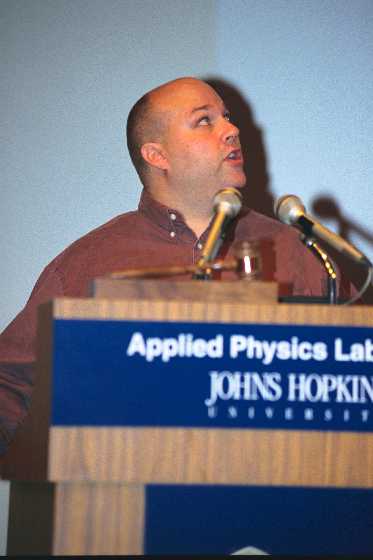 Norm Buchanan, an associate professor in the Department of Physics, has shared in a prestigious honor from the European Physical Society for his contributions to high energy physics, the examination of the most fundamental building blocks of nature.
Norm Buchanan, an associate professor in the Department of Physics, has shared in a prestigious honor from the European Physical Society for his contributions to high energy physics, the examination of the most fundamental building blocks of nature.
The European Physical Society awards the High Energy and Particle Physics prize to an outstanding contribution to the discipline. The Collider Detector at Fermilab (CDF) and D0 Collaborations received the honor this year for the discovery of the top quark and the detailed measurement of its properties.
There are six types of quarks, which constitute the most fundamental components of matter. The top quark is the most massive of the subatomic elementary particles, which also include leptons, antiquarks, and antileptons.
As a post doc at Florida State University stationed at FermiLab, Buchanan led the calorimeter group and acted as run coordinator for the D0 collaboration. His work in these roles ensured that the experiment operated and collected good quality data appropriate for use in the study.
The D0 Experiment is an international collaboration of scientists, primarily located at the Fermilab in Batavia, Illinois. The collaboration focuses on researching high energy physics, with precise studies of interactions of protons and antiprotons to search for subatomic clues that reveal the character of the building blocks of the universe.
Today, Buchanan leads the Colorado State University NOvA group, as well as a group of researchers at CSU working on an international research experiment called ProtoDUNE at CERN.
‘We need a better, more complete model’
Quarks, which are coupled and interact in ways that are still being uncovered, could prove key to fundamental understandings of particle physics.
“The Standard Model of particle physics, one of the best tested theories in physics, is amazing at predicting some things extraordinarily well,” Buchanan said. “But it does not predict some things – including the mass of the top quark.”
The Standard Model is not a complete description of particle physics in our universe, but one of the most successful theories to fill in some of these blanks is called supersymmetry, or SUSY – a principle that proposes a relationship between bosons and fermions, which are classes of elementary particles.
“With this additional symmetry, you end up with a bigger, more encompassing description that’s actually quite elegant,” Buchanan said.
However, physicists are not currently seeing it. “We’re getting down to threading a needle to make it work, so we don’t know if we’ll see supersymmetry or not,” he said.
Understanding supersymmetry could push physics forward in a fundamental way. Potential areas of impact include beams used for cancer research, superconducting magnets, MRI technologies, and high-performance computing.